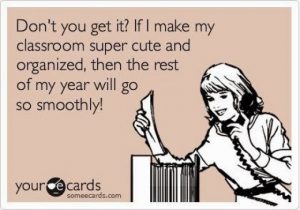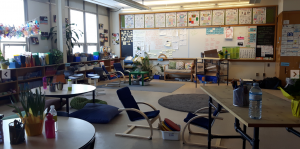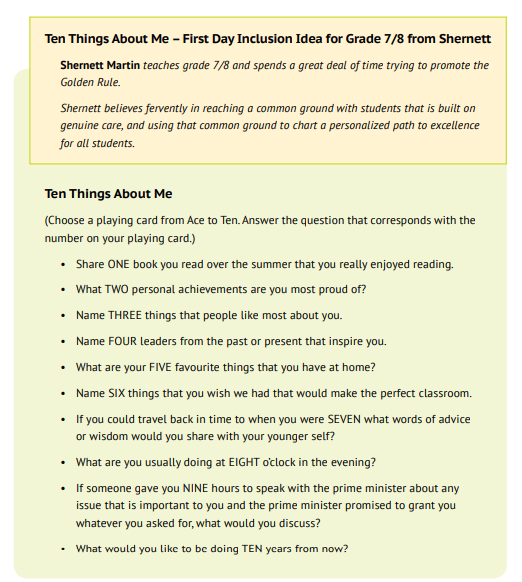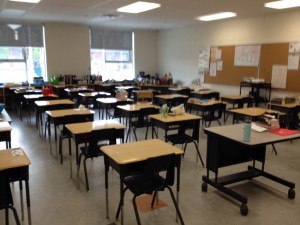It has been a full two years without student desk groupings and I had completely forgotten about all the benefits it brings to the classroom. Not only does it brighten student morale, but it provides so many rich learning opportunities. I wanted to dedicate this post to the celebration of being back in groups!
Last year as we all know, (even though we did group work) students had to sit on their own due to COVID regulations. Since I taught online last year, I did not get to witness many group work settings as my students who worked in breakout rooms chose to keep their microphones and cameras off. I was able to witness group chats but nothing is better than in-person group work.
As restrictions are lifting, students are able to get back to some of the simple things they could enjoy pre-COVID, one of them physically sitting beside their peers. ** I created groups in my classroom last week and I cannot express how much of a change it has brought into the classroom. Just having a peer nearby has brought so many students to life, some who have been putting their head down and not participating this year. Now that they are sitting directly beside a group of people, they have no other choice but to become involved in the conversations and the learning around them. They do not seem frustrated at this, rather they are thankful for this new opportunity. This peer support has really helped a lot of my students. I was starting to think that some of my students would never regain the ability to socialize with others but the proximity of their peers has really helped them grow out of that discomfort. About six students decided they wanted to continue sitting on their own, but after a few days of seeing how exciting the prospect of sitting in a group was, they merged groups with nearby friends. These group settings have created new friendships that couldn’t have started without the new group settings.
Having students working nearby each other has also allowed for many group work activities. Some of the ones we have enjoyed in the past two weeks have been:
- Solving complex math problems, drawing off the ideas of their peers to contribute to their answer
- Brainstorming about topics such as the forms of bullying, landforms and types of mixtures
- Solving hands on tasks that involve building structures or mechanisms
- Students getting help from a friend with spelling (before they had to travel out of their seat to ask for this assistance which wasn’t allowed)
- Confidence when solving independent problems by comparing end solutions
- Sharing devices to research as we only have two iPads in our classroom
- Being involved in conversations which otherwise would have had to take place across the room
- Continuing to improve collaboration skills which have been on pause
- Allowing for differentiated instruction opportunities that have been on pause since 2020
I know that groups can pose a classroom management issue such as breaking up group conversations. I am actually thankful for these conversations as before, it was challenging to get anyone to speak to each other. Attempting to chat with someone across the room was actually more disruptive than it is with the group settings. I continue to work on classroom management techniques as I have not had the practice with managing physical groupings since 2020.
I look forward to continuing to look at new and exciting group work activities as we are able to provide these for our students again. We are currently learning about hydraulics in our grade eight science unit so I am looking forward to students creating their own hydraulic machines together. I am also extremely thankful for the new friendships that have formed, especially with it being so close to the end of the year.
I know these successes are small and it may seem silly, but the power of physically grouping students has really changed things in my classroom and I cannot wait to see what happens next.
If you have any exciting new group work activities you have tried, I would love to hear them as it has been a while since I have done some fun team building activities.
**Note: All of my students that sit in groups wear masks (their personal and preferred choice).**
ETFO’s recent media release related to masking can be found here.
PLEASE NOTE: ETFO’S POSITION ON IN-PERSON LEARNING REMAINS UNCHANGED. THE UNION FIRMLY BELIEVES THAT THE DAILY, IN-PERSON MODEL OF INSTRUCTION AND SUPPORT BEST MEETS THE EDUCATIONAL, DEVELOPMENTAL AND SOCIAL NEEDS OF STUDENTS, PROVIDES THE BEST EXPERIENCE FOR SUPPORT, AND IS THE MOST EQUITABLE LEARNING MODEL FOR ALL STUDENTS.
ETFO’S EXPECTATION IS THAT ELEMENTARY VIRTUAL LEARNING IN ANY CAPACITY, INCLUDING THROUGH HYBRID MODELS OF INSTRUCTION, WILL END ONCE THE PANDEMIC ENDS.


 Chapter 2 ends with classroom set-up. As many of you know, I was a passionate advocate of flexible seating in the classroom. Years ago, my students worked on a Math project where they re-designed our classroom while taking into consideration their learning needs. They measured the classroom and petitioned our Principal for some money for items they thought would better meet their learning needs. Some wanted standing tables while other wanted opportunities to sit on the floor. We created a learning environment that worked best for us and the autonomy and increased levels of ownership in the classroom were an indication that students felt as thought the classroom was their space. Now I know that we were lucky in that we were given some money to redesign but since leaving that school, I learned 2 important lessons: where possible, let students design the space so they feel that sense of ownership in the space and be intentional about what you chose to include in your classroom space. This picture of our space looks quite full and I would have to say that every item spoke to who we were as a group. On pages 25 to 30, I love that each of the classroom learning spaces are different and yet the amazing educators can speak to the differences that they have included in their classrooms with intentionality. I just started feeling a little nostalgic about designing learning spaces!
Chapter 2 ends with classroom set-up. As many of you know, I was a passionate advocate of flexible seating in the classroom. Years ago, my students worked on a Math project where they re-designed our classroom while taking into consideration their learning needs. They measured the classroom and petitioned our Principal for some money for items they thought would better meet their learning needs. Some wanted standing tables while other wanted opportunities to sit on the floor. We created a learning environment that worked best for us and the autonomy and increased levels of ownership in the classroom were an indication that students felt as thought the classroom was their space. Now I know that we were lucky in that we were given some money to redesign but since leaving that school, I learned 2 important lessons: where possible, let students design the space so they feel that sense of ownership in the space and be intentional about what you chose to include in your classroom space. This picture of our space looks quite full and I would have to say that every item spoke to who we were as a group. On pages 25 to 30, I love that each of the classroom learning spaces are different and yet the amazing educators can speak to the differences that they have included in their classrooms with intentionality. I just started feeling a little nostalgic about designing learning spaces! Ideas
Ideas

